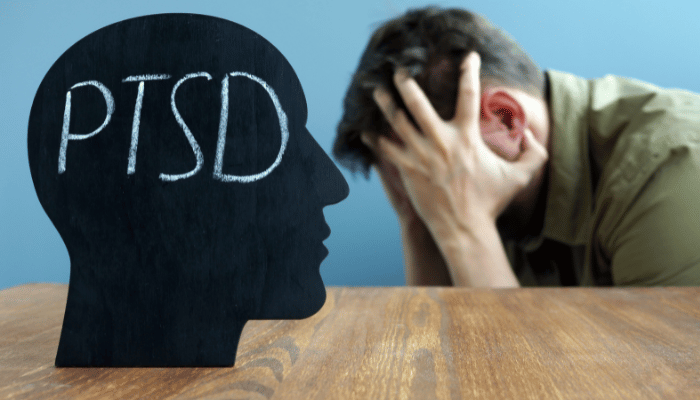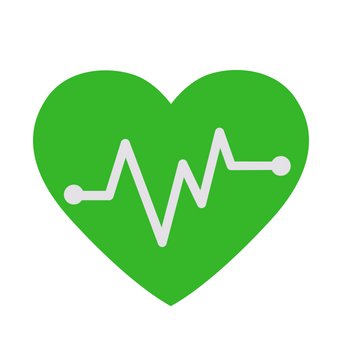Post-traumatic stress disorder (PTSD) is a mental health condition that can arise after experiencing a traumatic or life-threatening event. It can affect a person’s physical, emotional, and psychological wellbeing, and can result in a variety of physical symptoms. These physical symptoms can range from fatigue, headaches, and muscle tension to more serious medical conditions. In this article, we will explore how PTSD can affect you physically. We will also look at the long-term effects of PTSD on your health and how to manage physical symptoms associated with the disorder.

What Causes PSTD ?
Post-traumatic stress disorder (PTSD) is characterized by symptoms of anxiety, intrusive memories, flashbacks, nightmares, and avoidance of reminders of the trauma. The exact cause of PTSD is not known, but it is thought to be related to the intense stress of a traumatic experience combined with an individual’s psychological and biological makeup. Risk factors for PTSD include a history of childhood trauma, prior mental health issues, and family history of mental illness. In short, the disorder is triggered by –
- Traumatic events: PTSD can develop after a person has experienced or witnessed a traumatic event such as a natural disaster, a serious accident, a terrorist act, war/combat, rape or other violent personal assaults.
- Genetics: Research suggests that genetics play a role in the development of PTSD, as individuals with a family history of anxiety and mood disorders appear to be more likely to develop the disorder.
- Pre-existing psychological factors: Mental health issues such as depression, anxiety, or substance abuse may increase the risk of developing PTSD.
- Personality: Individuals with certain personality traits, such as those who are easily overwhelmed by stress, have difficulty regulating their emotions, or have difficulty relating to others, may be at greater risk of developing PTSD.
- Social support: People who lack social support after a traumatic event may be more likely to develop PTSD.
Physical Symptoms of PTSD
Post-traumatic stress disorder (PTSD) can cause a range of physical and psychological symptoms, such as flashbacks, nightmares, difficulty sleeping, and difficulty concentrating. People with PTSD may also experience physical symptoms, such as headaches, fatigue, muscle tension, or chest pain. These physical symptoms can be a result of the stress and anxiety associated with the disorder, and can interfere with a person’s daily life. Understanding the physical effects of PTSD can help individuals take steps to better manage their condition. These are the main Physical Symptoms of PTSD –
- Hyperarousal: Increased alertness, startle response, irritability, and angry outbursts
- Re-experiencing: Nightmares, intrusive memories, flashbacks, and emotional distress
- Avoidance: Avoidance of people, places, and activities that may trigger traumatic memories
- Cognitive changes: Negative changes in self-perception, difficulty concentrating, and difficulty remembering details of the traumatic event
- Sleep disturbances: Insomnia, nightmares, and difficulty falling or staying asleep
- Physical symptoms: Fatigue and low energy, increased heart rate, and increased blood pressure
- Digestive problems: PTSD can also cause physical symptoms such as digestive problems. Hence, one can experience nausea, abdominal pain, diarrhea, constipation, and indigestion. These symptoms can cause distress and further disrupt the activities of daily living.
Impact of PTSD on Physical Health
Post-traumatic stress disorder (PTSD) can have a significant impact on physical health. It is important to recognize the physical symptoms of PTSD and to seek treatment to ensure that physical and mental health are both in balance.
Take Charge of Your Health with The Home Doctor
Discover real-world remedies and first-aid solutions you can use when help isn’t around.
👉 Claim Your Home Doctor GuideIncreased Risk of Cardiovascular Disease
There is evidence to suggest that PTSD can increase an individual’s risk of developing cardiovascular disease. Studies have found that individuals who have PTSD are more likely to experience high blood pressure, irregular heart rate, and increased inflammation, all of which can contribute to cardiovascular disease. Additionally, people with PTSD often experience chronic stress, which can cause poor lifestyle choices such as smoking, drinking, and unhealthy diet, which can further increase their risk of developing cardiovascular disease. Ultimately, it is important to note that there is a connection between PTSD and cardiovascular disease, and it is important for individuals to be aware of this connection and take steps to manage their mental health in order to reduce their risk of developing cardiovascular disease.
Weakened Immune System
PTSD can have a significant impact on the immune system, weakening the body’s natural defenses against infection and disease. Studies have shown that people with PTSD have lower levels of circulating immune cells, including T-cells and natural killer cells, which are responsible for fighting infection. Furthermore, people with PTSD have been found to have higher levels of inflammation biomarkers, including C-reactive protein, indicating that their bodies are in a state of heightened inflammation. This can lead to an increased risk of autoimmune diseases and other health issues. Ultimately, PTSD can lead to a weakened immune system, making the body more susceptible to infection and illness.
Increase in Substance Abuse
PTSD can definitely lead to an increase in substance abuse. People with PTSD are more likely to use drugs or alcohol to self-medicate and cope with their symptoms, such as anxiety, flashbacks, nightmares, and depression. Substance abuse can be a dangerous coping strategy, as it can lead to addiction, health problems, and further psychological distress. It is important that people with PTSD seek professional help from a mental health provider to address their PTSD symptoms and develop healthy coping strategies.
Managing (PTSD) with popular treatment therapies
Post-traumatic stress disorder (PTSD) therapies can help individuals cope with and manage the symptoms of this mental health condition. There are a variety of treatments available, including cognitive-behavioral therapy (CBT), eye movement desensitization and reprocessing (EMDR), and medications. Each type of therapy has been proven to have some effectiveness, depending on the individual’s needs and preferences. PTSD can be a difficult and long-term condition to manage, but with the right support and treatment plan, individuals can find relief and improved quality of life.
- Cognitive-Behavioral Therapy: A type of psychotherapy that can help individuals learn techniques to manage their responses to traumatic events and develop healthy coping skills.
- Exposure Therapy: A type of psychotherapy that can help individuals face their fears and revisit traumatic memories in a safe and supportive environment.
- Eye Movement Desensitization and Reprocessing (EMDR): A type of psychotherapy that uses bilateral stimulation (such as eye movement or tapping) to help individuals process traumatic memories.
- Medication: Certain medications, such as antidepressants, can help individuals manage the symptoms of PTSD.
- Alternative Therapies: There are a number of alternative therapies that can help individuals manage their symptoms of PTSD, such as yoga, meditation, and acupuncture.
In conclusion, PTSD can have a dramatic physical impact on one’s body that can cause long-term health problems. It can cause headaches, chest pain, digestive issues, increased heart rate, and fatigue. It can also lead to depression, anxiety, and other mental health issues. It is important to recognize the physical symptoms of PTSD and seek help if they persist. With proper treatment and support, individuals can learn to manage their symptoms and lead healthier lives.

Lifebing is driven by an unrelenting passion for promoting health and well-being, our team is wholly committed to curating exceptional content and immersive experiences.
